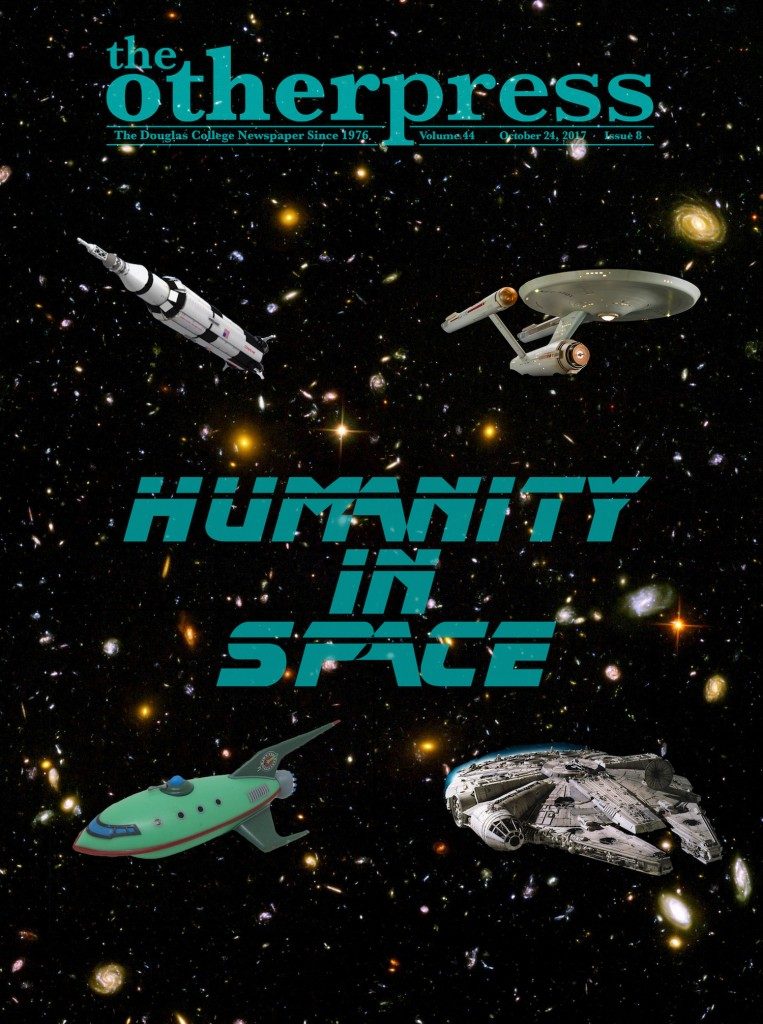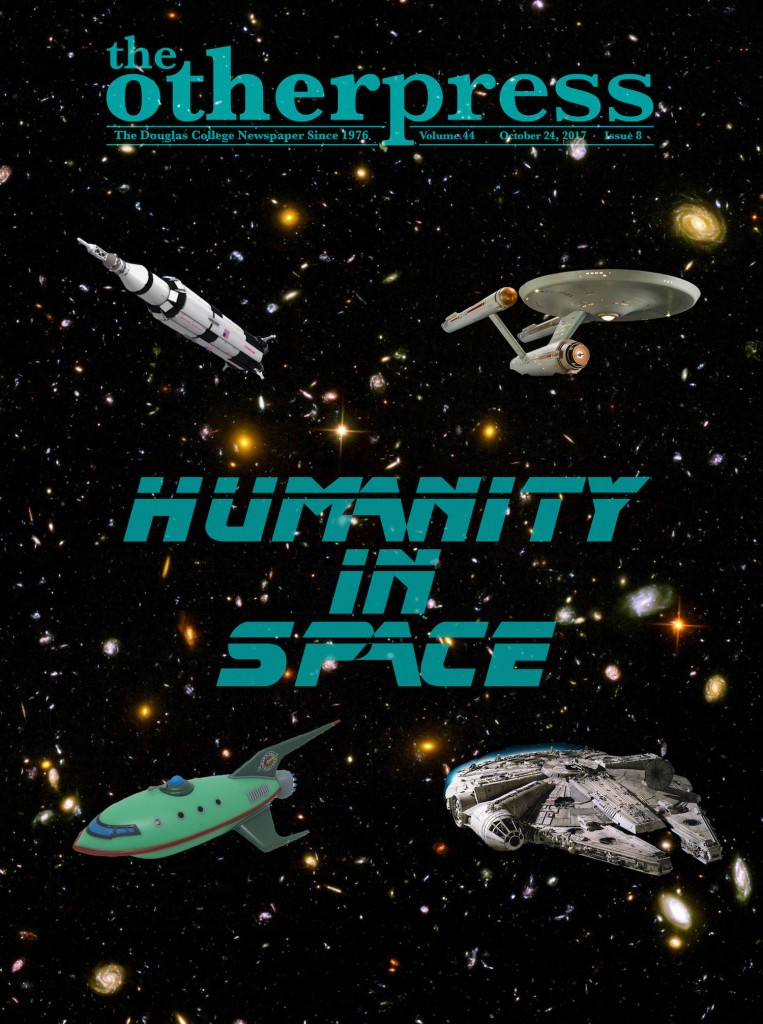
Sputnik begins Earth’s quest into ‘the final frontier’
by Clive Ramroop, Contributor
“The only way of discovering the limits of the possible is to venture a little way past them into the impossible.”
– Clarke’s Second Law
Imagine living in the United States in 1957, a decade into the Cold War. Eisenhower begins his second presidential term. Denying the right to vote in a federal election is now illegal. The Korean War ended four years ago. There are no home computers or cell phones. John Wayne, Rock Hudson, and Elvis Presley are the dominant stars in entertainment. Elsewhere on the globe, Japan’s economy is finally recovering after surrendering at the end of World War II. Germany, split in half after losing that war, is four years away from building the Berlin Wall.
And on October 4, the Soviets launch Sputnik.
America freaks.
The Space Race is on. The Russians would seize a clear head start, launching Earth’s first artificial satellite (Sputnik 1), first biological life form (Laika the dog), and first human (cosmonaut Yuri Gagarin) into space. Among global tensions between Western democracy and the communist Eastern Bloc, and worries about a nuclear arms race against its rival nation, the US would establish NASA and regain the lead in 1969 with Apollo 11: The first mission to successfully land a human being on another celestial body.
While the old Iron Curtain has long rusted away and the term “Soviet” barely induces an emotional reaction anymore, our world is in a new “space race” of sorts today. But rather than being dominated by two national antagonists, space exploration is pursued and represented by more than 70 government agencies from most continents on the globe, as well as some private companies—often in civil interaction with each other.
“One small step for man, one giant leap for mankind.”
– Neil Armstrong
Entering the Space Age, the Russians’ rapid progress in their pioneering space efforts forced the United States to play catch-up. Ironically, the means to combat its Cold War enemy came from a technology captured from a past “hot war” opponent. In late World War II, 13 years before the Sputnik mission, German scientist Wernher Von Braun had invented the V-2 rocket, the first ballistic missile capable of carrying a military warhead on a trans-atmospheric trip from launch site to target. When Germany surrendered, Von Braun defected to the United States and brought his research with him to his new home. In replacing the warheads with capsules to accommodate astronauts, the tool invented to destroy a world civilization was now repurposed to elevate it.
As Neil Armstrong prepared for his trip to the Moon, imaginations speculated on what could be next for humanity in space. Scenes in the movie 2001: A Space Odyssey (1968) predicted that space tourism in the future would be as commonplace as airline travel, if the evolution of space flight stayed on its then-current trend. When a mechanical failure on Apollo 13 put its astronauts’ lives at stake—“Houston, we’ve had a problem”—Congress aborted that optimistic vision, cutting NASA’s budget and forcing the cancellation of the remainder of the Apollo missions after Apollo 17 in 1972. Still, some notable achievements did come to pass, such as the US Space Shuttle (the first reusable spacecraft), Russia’s Soyuz rockets, and the International Space Station—the latter being a five-nation joint project among the US, Russia, Europe, Japan, and Canada: A startling contrast to the hostile dualism of the 20th century superpowers.
In recent years, Mars has been chosen as humanity’s next landing goal, a notion enhanced in the public eye by the movie The Martian (2014) and the novel on which the film was based, and National Geographic Channel’s mini-series Mars (2016). With the Red Planet already being explored by robotic probes like Curiosity, non-governmental organizations are plotting manned missions of their own. SpaceX aims to land passengers and establish a colony on Mars in the 2020s, while Mars One is eyeing its own permanent Martian colony a decade later.
“Twinkle, twinkle, little star…”
Of course, space is so immeasurably vast that exploring this realm shouldn’t be limited to the Moon and Mars. But the conditions of deep space and many of its worlds are so inhospitable to life that human astronauts wouldn’t survive a visit in person, if they didn’t die during the interminably long voyage first. Not to worry; if a living creature can’t be sent into a harsh environment, go with a well-built tool instead.
Immediately after Sputnik, the Americans and the Russians both scrambled to dispatch more satellites, eventually creating probes for scientific purposes like studying Earth’s atmosphere or collecting samples of the Moon. Over time, probes were sent to explore the planets in our solar system: Curiosity on Mars, New Horizons’ fly-by of Pluto, Juno’s visit to Jupiter, and the Cassini mission in which the probe made its farewell plunge into the ringed planet of Saturn last month. And there’s the Rosetta craft, sent by the European Space Agency (ESA), which landed on a comet last September.
To date, the farthest probes from Earth are the twin craft of the Voyager mission: Launched exactly 40 years ago, now beyond the boundaries of our solar system. Supervised by the late Carl Sagan, each craft bore a copy of a Golden Record that stored numerous images and sounds representing Earth and its cultures, natural scenery, and architecture. Sagan described Voyager as a “bottle into the cosmic ocean” in case any “advanced, space-faring civilizations in interstellar space”—if there is anyone out there—might find them.
For studying bodies beyond our solar system—including galaxies other than our own Milky Way—a telescope needed to be placed in outer space, in order to capture “pure” images without Earth’s atmosphere filtering them. The most famous example is the Hubble Space Telescope, launched in 1990. While the telescope is still functioning today as a long-enduring marvel in astronomic technology, a next-generation space observatory named the James Webb Space Telescope is being developed by NASA, the ESA, and the Canadian Space Agency (CSA). This successor to Hubble, bearing a larger mirror than that of its predecessor, is planned to launch in October 2018.
“Reach out and touch someone…”
An old adage says that science fiction often leads to science fact. While we still have yet to see lightsabers, teleportation, or hoverboards resembling those in Back to the Future, Part II (1989), we do have the World Wide Web, robotics technology, and telecommunication satellites. That’s right; the concept of an orbiting satellite bouncing signals between points on Earth did not come from an engineering laboratory—it was the brainchild of science-fiction writer Arthur C. Clarke, author of Rendezvous with Rama (1972), Childhood’s End (1953), and the screenplay for 2001: A Space Odyssey. Also a non-fiction science writer, Clarke submitted his proposal titled Extra-Terrestrial Relays to British publication Wireless World (now Electronics World) in October 1945—exactly twelve years before Sputnik.
As the Cold War superpowers rushed their satellites into orbit, other Western nations such as Canada and the UK got into the act by the mid-1960s, piggybacking their satellites onto American rockets. As more joined in, this led to space technology for applications closer to home for the average Earth-bound citizen. Today, most industrialized countries have sent over 4,000 satellites in orbit—though only about a third of them are still operational—for purposes ranging from radio and television to telephone and internet, as well as the military. Reconnaissance satellites, or spy satellites, are still being launched by government organizations to this day.
These staggering advancements in space exploration also yielded spin-off inventions used by everyday consumers, like image sensors in smartphone cameras, memory foam, and even Super Soakers. But the sad irony is that such achievements spawning these side benefits were spurred less by scientific curiosity, but more because of a quest for military superiority over an ideological enemy. In 1962, when President John F. Kennedy spoke at Rice University about his goal to send Americans to the Moon, his words conjured that old classic American imagery of intrepid exploration and relentless bravery: “We choose to go to the Moon in this decade, and do the other things; not because they are easy, but because they are hard… that challenge is one that we are willing to accept, one we are unwilling to postpone, and one which we intend to win.”
In an era fearful of mutually-assured destruction, perhaps it’s hard to completely fault Kennedy for emphasizing courage in dark times over cold scientific research as he addressed the American public. But during the Apollo 8 mission on Christmas Eve 1968, astronauts photographed “Earthrise”: a striking colour image which showcased for the first time a vulnerable-looking planet Earth over the Moon’s horizon, evoking a new sense of wonder that even the most destructive nuclear weapon couldn’t obliterate. Life magazine would select this picture for their 2003 collection of 100 Photographs that Changed the World.
As today’s giants sound off their visions to bring humanity to the Moon, Mars, and beyond, can another image emerge to unify our fragmented society’s attention for the sake of our survival in these uncertain times?


